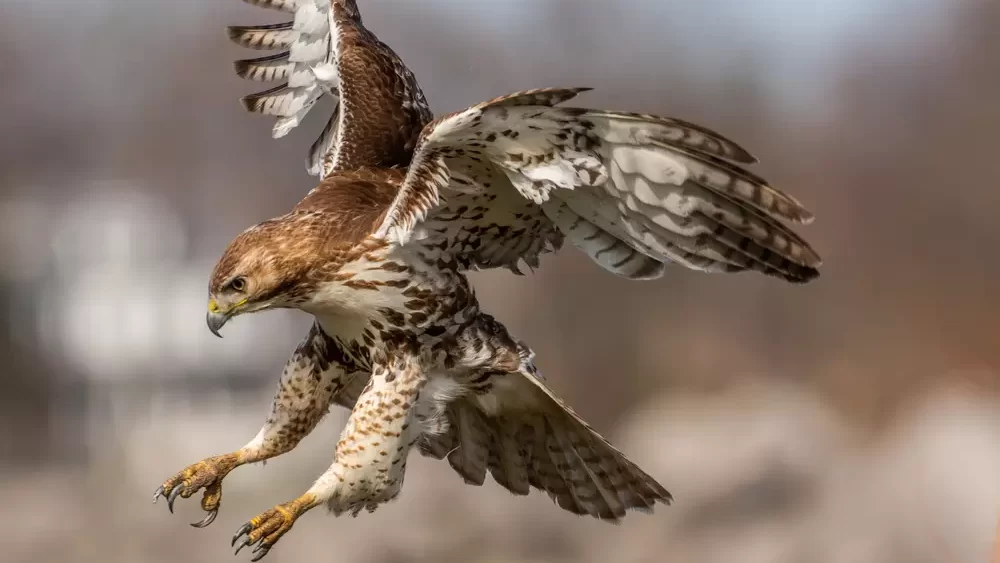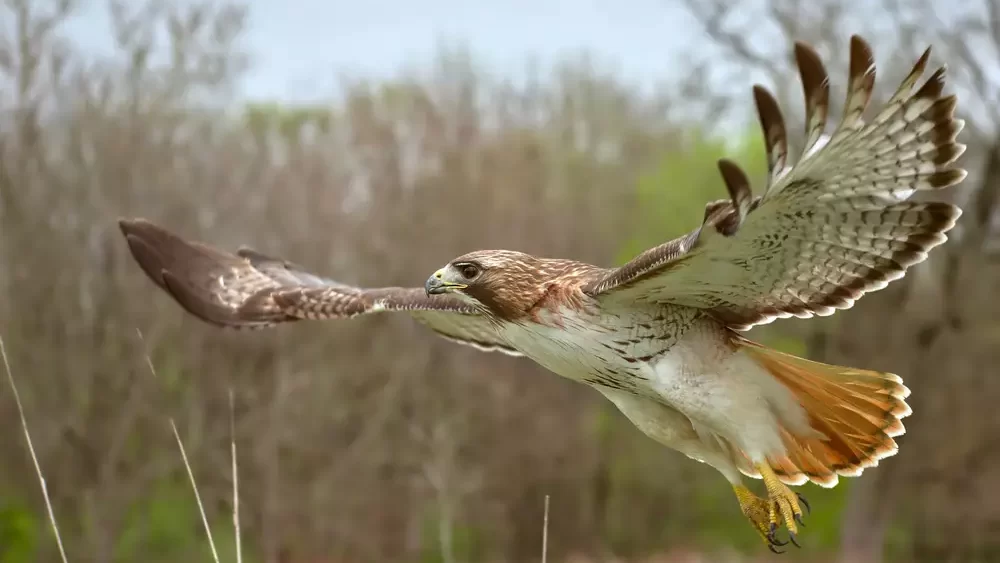When it comes to flying, hawks are among the most majestic and awe-inspiring birds. Their aerial prowess allows them to reach incredible heights and cover vast distances.
But, just how high can a hawk fly? Join us as we explore the soaring abilities of these remarkable birds, how they achieve such altitudes, and the factors that influence their flight.
The Intricate World of Hawks
Species and Varieties
Hawks are part of the Accipitridae family and consist of numerous species. Some well-known species include the Red-tailed Hawk, Cooper’s Hawk, and the Harris’s Hawk.
While each species varies in size, appearance, and behavior, they all share remarkable flying abilities.
Anatomy of Flight
Hawks possess powerful wings and strong pectoral muscles that allow them to generate the necessary lift for flight. Additionally, their large wingspans and lightweight hollow bones help them stay aloft with minimal effort.
Soaring to New Heights
How High Do Hawks Fly?
Hawks can reach impressive heights, with some species able to fly as high as 10,000 to 15,000 feet. Factors such as weather, habitat, and the hawk’s purpose for flying influence the altitude at which they fly.
Thermals: Nature’s Elevator
Hawks often take advantage of rising warm air currents called thermals to gain altitude without expending much energy.
By spiraling upwards in these thermals, hawks can reach great heights while conserving energy for hunting and migration.

Factors Affecting Hawk Flight
Weather Conditions
Weather plays a significant role in a hawk’s ability to fly high. Favorable weather, such as sunny days with strong thermals, allows hawks to reach greater heights compared to overcast days with weak or nonexistent thermals.
Habitat
The habitat in which a hawk lives can also affect its flying altitude. In open landscapes, hawks may fly higher to spot prey from a distance, while in dense forests, they may fly lower to navigate through the trees.
Hunting and Migration
Hawks fly at different altitudes depending on their purpose. When hunting, they often fly at lower altitudes to spot prey, while during migration, they may fly higher to take advantage of favorable winds and thermals.
The Impressive World Records
Highest Altitude Recorded
The highest recorded flight by a hawk was that of a Rüppell’s Griffon Vulture, which was confirmed at an altitude of 37,100 feet. While not technically a hawk, this bird is a member of the same Accipitridae family, showcasing the incredible heights some birds of prey can achieve.
Longest Migration
The Swainson’s Hawk, a species native to North America, is known for its impressive migration. They travel approximately 14,000 miles round trip from their breeding grounds in the United States and Canada to their wintering grounds in Argentina.
Hawk Vision: Seeing from the Skies
Exceptional Eyesight
Hawks have incredibly sharp vision, which is crucial for spotting prey from high altitudes. Their eyesight is estimated to be 2 to 8 times better than that of humans, allowing them to see small animals from a distance of up to two miles.
How Hawk Eyes Work
The secret behind a hawk’s exceptional eyesight lies in its unique eye structure. Hawks have a higher density of photoreceptor cells in their retinas, providing them with greater visual acuity.
Additionally, their eyes contain a specialized area called the fovea, which is responsible for sharp central vision.

The Role of Altitude in Hawk Social Behavior
Territorial Displays
Hawks use their impressive flying abilities for more than just hunting and migration. High-altitude flight plays a role in their social behavior as well.
For example, during mating season, hawks may perform aerial displays, soaring to great heights and diving rapidly to attract a mate or establish territory.
Group Hunting and Migration
Some species of hawks, such as the Harris’s Hawk, are known to engage in cooperative hunting. These hawks may fly at varying altitudes to communicate with one another and coordinate their hunting efforts.
During migration, hawks often travel in groups called kettles, utilizing thermals to gain altitude and conserve energy for their long journey.
Human Impact on Hawk Populations
Habitat Loss
Human activities, such as deforestation and urbanization, have led to habitat loss for many hawk species. This loss of suitable habitat can force hawks to fly at lower altitudes or alter their hunting and migration patterns.
Environmental Contaminants
Pesticides and other environmental contaminants can also affect hawk populations. These chemicals may accumulate in the food chain, leading to decreased reproductive success and increased mortality rates for hawks.
FAQs
Q: How do hawks manage to fly so high?
A: Hawks take advantage of thermals, which are rising warm air currents, to gain altitude without expending much energy. Additionally, their large wingspan and lightweight hollow bones allow them to stay aloft with minimal effort.
Q: Do all hawks fly at the same height?
A: No, the altitude at which hawks fly can vary depending on the species, weather conditions, habitat, and the hawk’s purpose for flying.
Q: Do hawks use their high-flying abilities for hunting?
A: While hawks often fly at lower altitudes to spot prey, their ability to fly high can help them locate prey from a distance in open landscapes.
They may also use their high-flying abilities to search for thermals or favorable wind currents to aid in hunting and migration.
Final Thoughts on the Soaring World of Hawks
Hawks are truly remarkable creatures, with their incredible ability to fly at astonishing heights and cover vast distances.
Their mastery of the skies is made possible by their unique anatomy, keen eyesight, and strategic use of thermals. Whether they’re hunting, migrating, or engaging in social behavior, hawks showcase an unparalleled mastery of the skies.
As we continue to learn more about these awe-inspiring birds, it is essential that we work to protect their habitats and ensure the survival of these magnificent aviators.